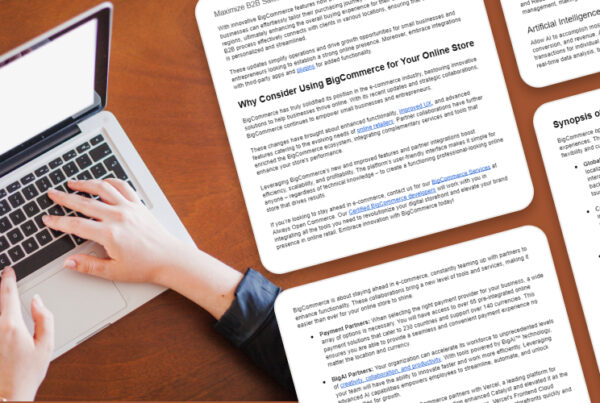Welcome to the world of persuasive design! Attention spans are shorter in the digital world, so it’s crucial to captivate your users and guide them towards desired actions.
Picture this: you stumble upon a website with an eye-catching interface that instantly engages you. The seamless navigation, intuitive layout, and cleverly placed call-to-action buttons effortlessly draw you in. Without even realizing it, you find yourself clicking “Buy Now” or subscribing to their newsletter – all thanks to the power of persuasive design.
Grasp the art of persuading users through effective UI/UX design techniques. Explore how psychology plays a vital role in shaping user behavior and discuss what makes designs more persuasive.
The Psychology of Persuasion
Have you ever wondered why certain designs have the power to captivate and influence us? It’s the psychology of persuasion. Understanding how our minds work helps create designs that deeply resonate with users.
- One key element in persuasion is understanding human behavior. We are wired to seek pleasure and avoid pain, so incorporating elements that trigger positive emotions is vital. Colors, imagery, and typography can evoke specific emotional responses – think about how a warm color palette creates feelings of comfort and trust.
- Another powerful aspect of persuasion lies in social proof. We tend to follow the crowd, seeking validation from others before making decisions. Including testimonials or showcasing user reviews can significantly impact user trust and encourage conversions.
- Scarcity also plays a significant role in persuasive design. When something feels limited or exclusive, it triggers our fear of missing out (FOMO). Highlighting limited-time offers or displaying stock availability instills a sense of urgency, compelling users to take immediate action.
- The way information is presented also affects its persuasiveness. People are more likely to be persuaded by clear and concise messaging rather than overwhelming amounts of text. Using visuals such as icons or infographics helps convey messages quickly and effectively.
- The concept of cognitive load for a persuasive design. Our brains have limited capacity for processing information at any given time; therefore, simplifying complex tasks into smaller steps enhances usability and encourages higher conversion rates.
Understanding these psychological principles allows UI/UX designers to tap into users’ subconscious motivations effectively. Utilizing emotional triggers, social proof, scarcity tactics, impactful messaging, and minimizing cognitive load can create designs that truly persuade users towards desired actions without even realizing it.
The User Experience
User experience (UX) is a crucial aspect of any design. It focuses on user interactions, and aims to create a seamless experience. A well-designed user experience impacts the success of your website or app.
- One element of a good user experience is usability. Your website or app should be easy to navigate, with clear labels and intuitive controls. Users should locate what they’re looking for quickly.
- Another important factor in UX design is visual appeal. The overall look and feel of your interface should be visually pleasing and aligned with your brand identity. This includes using appropriate colors, fonts, images, and layouts that are visually appealing while still being functional.
- Responsiveness is essential in providing a positive user experience. Your website or app should load quickly across different devices and screen sizes. It should also adapt seamlessly when users switch between devices or orientations.
- Personalization plays a significant role in enhancing the user experience. Tailoring content based on individual preferences can make users feel valued and engaged with your platform.
Focusing on creating an exceptional user experience helps establish long-lasting relationships between your brand and its customers, resulting in business growth and success.
5 Techniques for Persuasive UI/UX design
There are persuasive UI/UX design techniques that can greatly enhance the user experience and increase conversion rates. Here are five effective techniques to consider:
- Understand Your Users: Conduct thorough research to gain insights into your users’ needs, preferences, and behaviors. This knowledge will enable you to tailor your design decisions accordingly.
- Engage Emotions: Tap into emotions by using visually appealing elements and incorporating storytelling techniques into your design. Emotional engagement can greatly influence decision-making processes.
- Simplify Navigation: Simplifying navigation structures and minimizing cognitive load makes it easy for users to find what they want. Clear labels, intuitive menus, and well-organized content contribute to a smoother user experience.
- Provide Feedback: Keep users informed about their interactions through visual cues such as progress indicators or confirmation messages after completing an action. Prompt feedback reassures users and enhances trust in the system.
- Utilize Social Proof: Leverage social proof by showcasing testimonials, reviews, ratings, or endorsements from satisfied customers or influencers within your industry. These elements build trust and credibility among potential customers.
Implementing these techniques in your UI/UX design strategy with careful consideration for your target audience’s needs and motivations can achieve higher conversion rates!
Persuasive Design Techniques for Mobile Devices
Persuasive design techniques for mobile devices are required now that smartphones and tablets are an integral part of life. It’s necessary to create a user interface that catches the eye and convinces visitors to take action.
- Prioritize Mobile-Friendly Layouts: Ensure that your website or application is responsive across different screen sizes and orientations so users can easily navigate on smaller screens without sacrificing functionality.
- Gesture-Based Interactions: Incorporate intuitive gestures such as swiping or tapping into your mobile interfaces to provide seamless interaction experiences that mimic real-world behavior.
- Streamline Forms: Simplify form inputs and minimize the number of fields required in order to reduce friction and improve conversions.
Test your design’s effectiveness in order to make informed decisions about improving your design for higher conversion rates.
How to Test Your Design’s Effectiveness
Once you have implemented your persuasive UI/UX design, it is essential to test its effectiveness. Testing allows you to gather valuable data and insights that can help improve your design and increase conversion rates.
- A/B testing is one effective way to test your design. This involves creating two variations of a webpage or interface element and randomly showing them to users. By comparing the performance of each variation, you can determine which one results in higher user engagement or conversions.
- Another method is usability testing, where real users interact with your design under controlled conditions while providing feedback. This type of testing helps identify any usability issues or areas for improvement.
- Heatmap analysis is another useful tool for understanding how users interact with your design. Heatmaps visually represent where users click, scroll, or spend the most time on a page. This information can reveal patterns and behaviors that may influence the effectiveness of your design elements.
Qualitative and Quantitative
- Gathering qualitative feedback through surveys or interviews can provide valuable insights into how users perceive and engage with your design. Asking specific questions about their experience can uncover pain points or areas where they felt persuaded by the UI/UX elements.
- Analyzing quantitative data such as bounce rates, conversion rates, or time spent on different pages gives a better understanding of how well your design is performing.
Testing the effectiveness of your persuasive UI/UX design is crucial for optimizing its impact on user behavior and increasing conversions. Utilizing various testing methods can help you gain valuable insights in achieving desired outcomes.
Designing for conversion requires a deep understanding of the psychology behind persuasive UI/UX design. By implementing effective techniques, you can create interfaces that not only captivate users but also guide them towards desired actions.
At Always Open Commerce, we have excellent developers, designers, and marketers that will work together in creating and transforming your e-commerce website!













